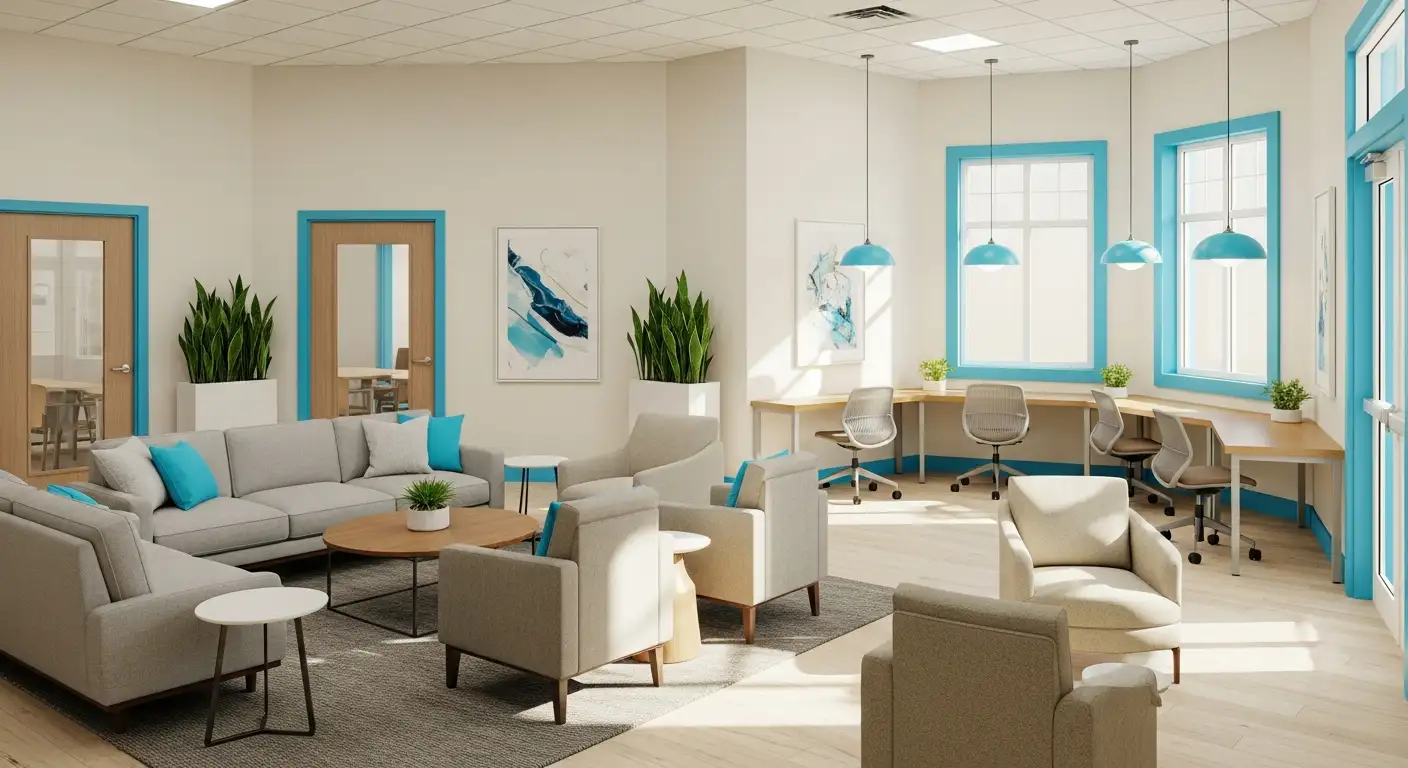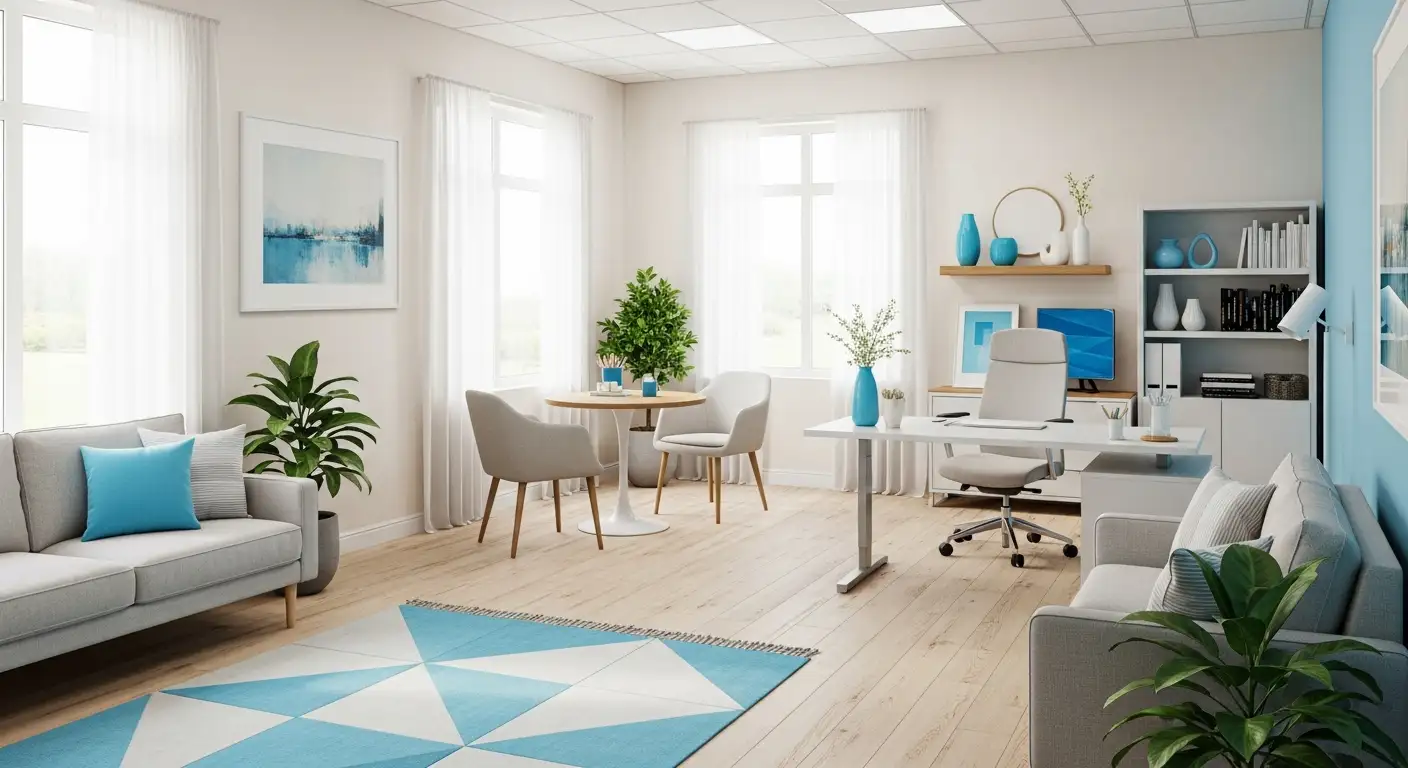Enhancing Emotional Understanding with Art Therapy
Art therapy has emerged as a powerful, evidence-based approach to supporting emotional understanding and development in individuals with autism spectrum disorder (ASD). By harnessing the creative process, art therapy creates a safe, sensory-rich environment that fosters emotional literacy, self-esteem, and social skills. This article explores how art therapy facilitates emotional regulation and communication, examines effective techniques, and presents practical exercises backed by scientific research to improve neurodivergent individuals' emotional well-being.
The Intersection of Art Therapy and Autism Support
How do creative arts interventions support children with ASD?
Creative arts, including drawing, painting, music, and theater, play a significant role in supporting children with autism spectrum disorder (ASD). These activities provide rich sensory experiences that can facilitate sensory integration and emotional regulation.
Engagement in these activities often leads to improvements in social interaction, communication, and cognitive functions. For example, group art sessions foster collaboration, turn-taking, and listening skills, which are essential for social development.
Research shows that multiple sessions of art therapy are necessary to observe substantial progress. This consistent engagement helps children build confidence, develop fine motor skills, and express themselves in a non-verbal manner.
How does art therapy address performance skills and client factors in occupational therapy?
In occupational therapy, art interventions target the Performance Skills domain by improving social interaction capabilities and fine motor precision. They also influence Client Factors, especially body functions related to sensory processing and emotional regulation.
Art therapy techniques such as creating focused patterns, sculpting with clay, or designing visual timelines support these areas by providing structured yet creative activities. These tasks help children develop attention regulation, flexibility, and the ability to structure behavior.
Moreover, activities like emotion cards or murals serve as practical tools for emotional expression and understanding. These efforts align with OTPF–4 domains, ultimately enhancing everyday functioning.
What are the benefits of creative arts activities for emotional and social development?
Participating in arts-based activities promotes emotional communication by offering an alternative, expressive channel beyond speech. Children with ASD can convey feelings through colors, textures, and shapes, which helps them better understand and regulate emotions.
Art therapy also promotes social skills such as cooperation, turn-taking, and understanding others' perspectives through collaborative projects. Engaging in a creative process boosts self-esteem, confidence, and a sense of achievement.
Furthermore, sensory-rich activities help mitigate sensory processing challenges, leading to reduced anxiety and a more balanced emotional state. Overall, creative arts foster a supportive environment for emotional growth and social adaptability.
| Activity Type | Focus Outcomes | Additional Benefits |
|---|---|---|
| Drawing and Painting | Emotional expression, fine motor skills | Stress reduction, confidence boost |
| Music and Song | Social interaction, emotional regulation | Improved listening skills |
| Theater and Role-Play | Social skills, perspective taking | Increased empathy, verbal skills |
| Sculpting and Modeling | Sensory integration, focus | Motor control, emotional expression |
Evidence from quantitative studies supports that both group and individual art therapy sessions are effective. These approaches are particularly beneficial when tailored to the individual's sensory sensitivities and communication preferences.
In summary, integrating creative arts interventions within autism support strategies provides a holistic way to enhance emotional resilience, communication, and social skills, paving the way for improved quality of life.
Supporting Emotional Understanding Through Creative Expression

How can art therapy support emotional understanding and regulation in individuals with autism?
Art therapy creates a safe, sensory-rich space where children and individuals with autism can explore their feelings through nonverbal means. Using colors, textures, and shapes, they can express emotions that may be challenging to articulate verbally. This process helps them recognize and externalize what they are experiencing internally, fostering greater self-awareness.
Structured art activities are particularly effective in reducing anxiety and improving focus. When engaging in painting, drawing, or tactile projects like clay modeling, individuals often find it easier to regulate their emotions. These activities promote calmness and help manage sensory overload or emotional distress.
Building emotional literacy is another significant benefit. Art therapy encourages users to identify, label, and express their feelings by creating visual representations, thus expanding their capacity for emotional understanding. This externalization process makes intangible feelings more concrete, leading to improved self-awareness and emotional resilience.
Shared art projects and collaborative activities also enhance social understanding and connection. They support emotional bonding and develop social skills such as turn-taking, listening, and cooperation. Overall, art therapy offers a strengths-based, holistic approach that nurtures emotional coordination, self-esteem, and identity development, making it an essential part of interventions for individuals with autism.
Techniques That Cultivate Emotional Awareness in Autism
What techniques are used in art therapy to enhance emotional awareness in autistic individuals?
Art therapy offers various approaches tailored to help children and adults with autism understand and express their emotions more effectively.
One of the primary methods involves transforming abstract feelings into concrete visual forms. Through activities like painting, drawing, and sculpting, autistic individuals can channel their emotions into symbols and images, providing a nonverbal pathway for emotional expression. These visual outlets are especially valuable when spoken language is challenging.
Sensory collage, clay modeling, and emotion painting are specific activities frequently used in therapy. Sensory collage combines different textures and materials, helping individuals associate tactile sensations with emotional states. Clay modeling promotes fine motor skills while enabling children to create physical representations of their feelings. Emotion painting encourages participants to explore and depict their emotional experiences through colors and shapes.
Therapists often incorporate spontaneous and interest-based interventions in sessions. Spontaneous art-making allows children to explore and express their feelings freely without rigid instructions, fostering emotional insights and reducing anxiety. Tailoring activities to the child's interests not only increases engagement but also enhances emotional understanding by connecting therapy with their natural curiosities.
Group art sessions are particularly effective in cultivating shared emotional experiences. Collaborating on projects encourages social interaction, empathy, and understanding of others' perspectives. These social aspects reinforce emotional awareness within a supportive community setting.
Overall, art therapy employs symbolic, visual, and participatory techniques to support emotional development. By providing a safe space for creative exploration, it helps autistic individuals recognize, articulate, and regulate their emotions, ultimately promoting emotional resilience and social connectivity.
Practical Exercises for Emotional Insights in Autism
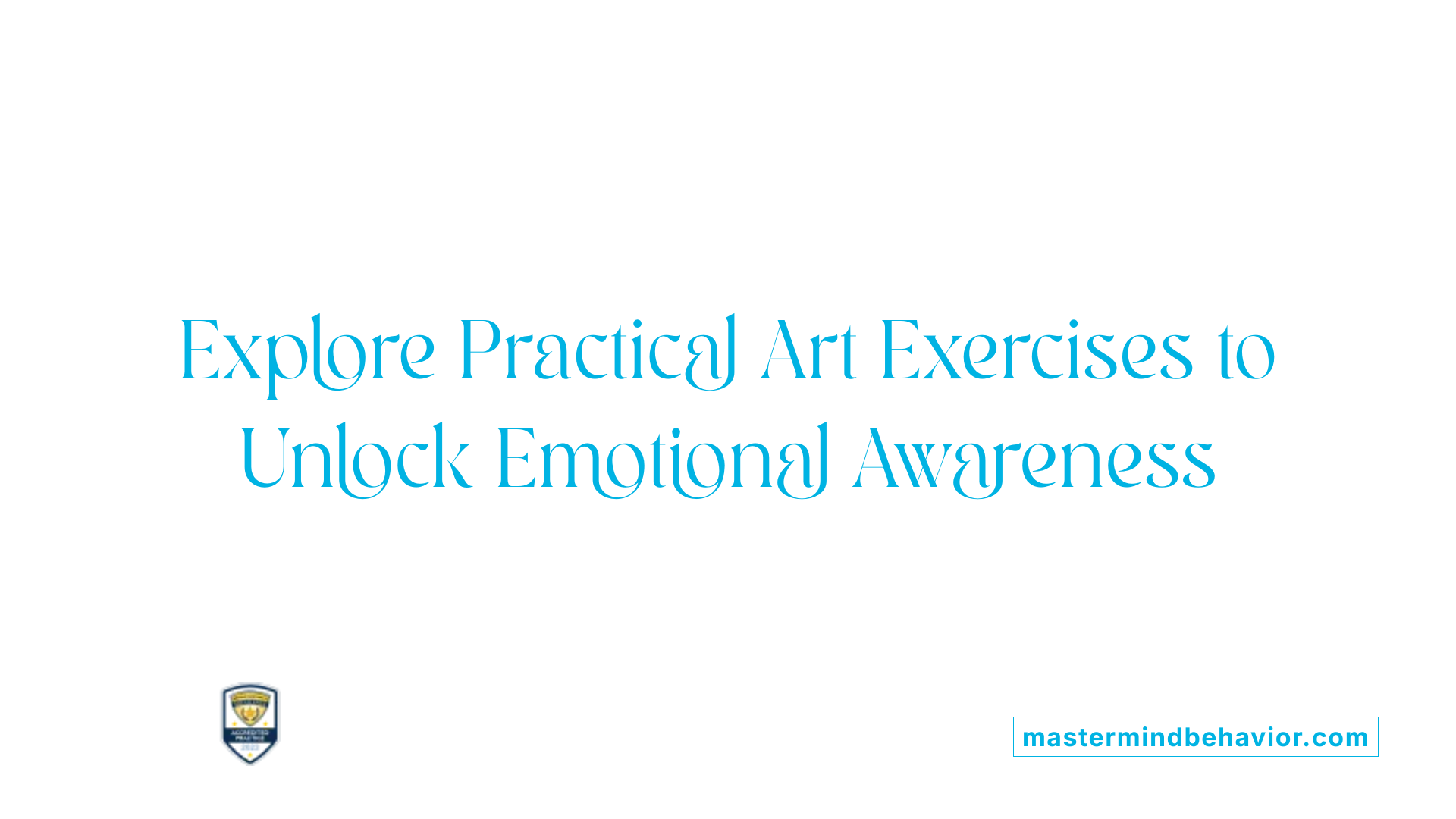
Are there practical exercises within art therapy that help with emotional insights for autistic individuals?
Indeed, numerous practical exercises in art therapy support individuals with autism in developing emotional awareness. These activities often focus on creating visual symbols of emotions, like emotion cards, visual timelines, or mood meters. Such tools enable children and adults to express feelings that are hard to put into words, aiding in emotional recognition and regulation.
Structured tasks such as clay sculpting, collaborative murals, and pattern-focused projects foster not only emotional understanding but also social interaction. These activities cultivate self-awareness while encouraging cooperation and turn-taking in group settings.
Sensory-sensitive crafts, including sculpture and mixed-media artworks, help process sensory information and reduce sensory overload. These projects provide tactile experiences that boost sensory integration, which is often challenging for autistic individuals.
Overall, integrating these art exercises into therapy promotes better emotional comprehension, supports communication skills, and facilitates social engagement. Such approaches make emotional insights more accessible, fostering resilience and well-being in individuals with autism.
Scientific Foundations Supporting Art Therapy in Autism
Numerous scientific investigations underpin the use of art therapy as a beneficial intervention for children with autism spectrum disorder (ASD). Systematic reviews and randomized controlled trials (RCTs) form the backbone of this evidence, illustrating how creative arts like drawing, painting, music, and theater can foster meaningful improvements.
Research indicates that engaging in art therapy can significantly enhance social interaction, communication, and emotional expression among children with ASD. These interventions allow individuals to communicate indirectly through visual and tactile means, which is especially valuable for those with speech or sensory processing challenges.
Studies have demonstrated that consistent participation over multiple sessions can lead to positive behavioral changes. Children develop increased self-awareness, better emotional regulation, and improved social skills such as turn-taking, cooperation, and responsiveness.
To objectively assess progress, clinicians use specialized tools like the Observational Assessment Tool for Autism (OAT-A) and the Emotional Assessment Toolbox (EAT). These instruments help measure behavioral changes and emotional connectivity, validating the effectiveness of art therapy.
The combined evidence from high-reliability quantitative studies supports the assertion that art therapy is a credible and effective approach for addressing emotional and social difficulties in children with ASD. While further rigorous studies are encouraged to deepen understanding, existing research affirms its role in enhancing emotional resilience, social adaptability, and overall well-being.
| Evidence Source | Focus Area | Outcome | Additional Notes |
|---|---|---|---|
| Systematic reviews | Social and Emotional Development | Improved social skills and emotional regulation | Reviews highlight benefits across group and individual formats |
| RCTs | Communication and Behavior | Increased verbal and non-verbal expression | Multiple sessions required for significant gains |
| Assessment tools | Therapy Progress | Validated measures like OAT-A and EAT | Enable systematic evaluation of intervention effects |
| Overall Research | Autism Interventions | Positive behavioral and social outcomes | Supports use of creative arts as complementary therapy |
This growing body of evidence reinforces that art therapy is a valuable, research-supported approach that can complement traditional therapies, offering new avenues for emotional expression and social growth in children with ASD.
Enhancing Social Skills and Self-Esteem with Art
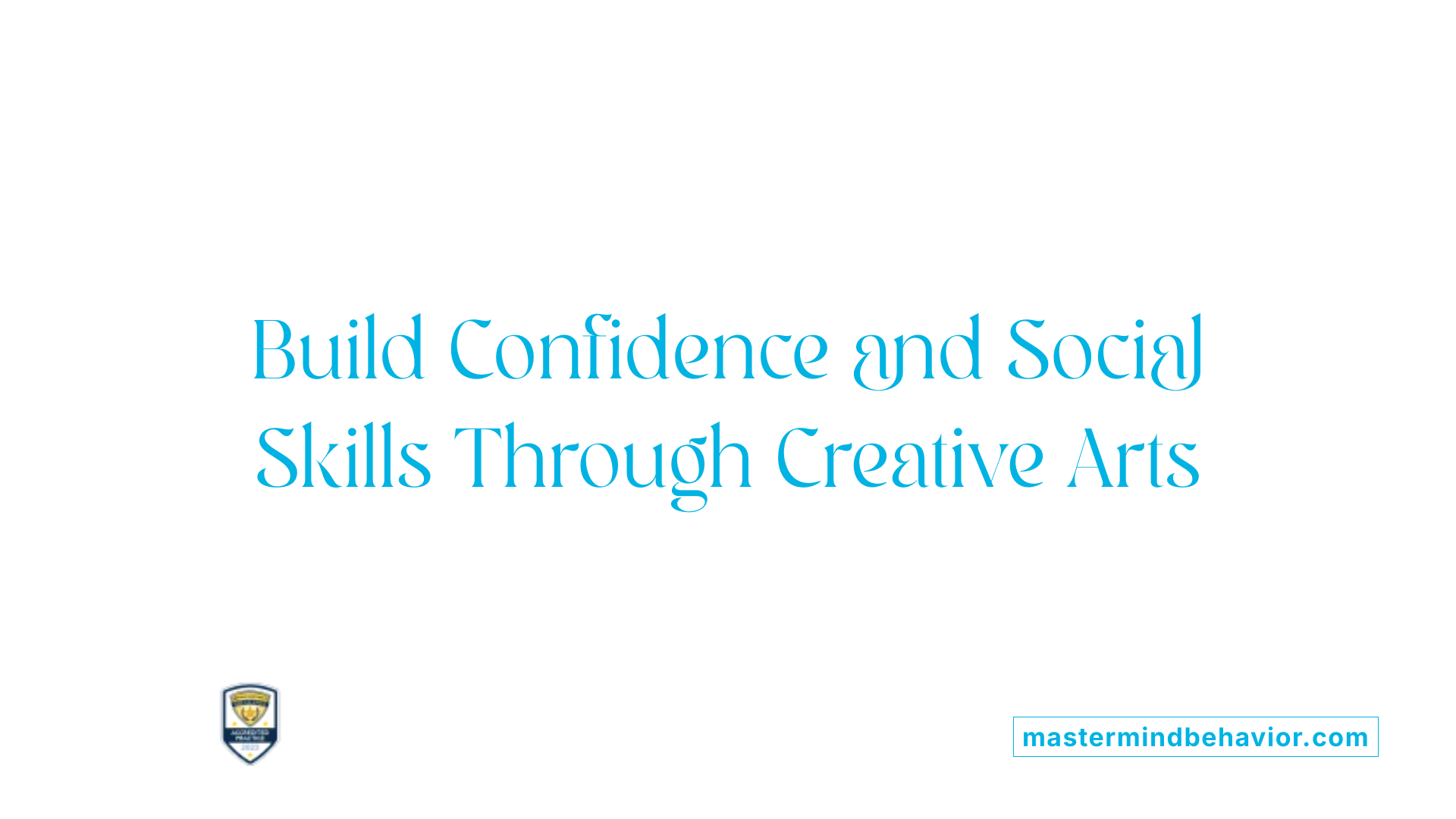
How does engaging in art therapy improve emotional communication and self-esteem in individuals with autism?
Art therapy provides a valuable non-verbal outlet for emotional expression, which is especially beneficial for individuals with autism who may find spoken language challenging. By using colors, textures, shapes, and creative tools, individuals can visually communicate their feelings, thoughts, and experiences. This process helps them recognize and share emotions more comfortably and effectively.
The creative process itself, including storytelling and multisensory activities, fosters emotional awareness and regulation. Engaging in guided projects often involves teamwork and collaboration, which naturally promotes social interaction skills such as cooperation and turn-taking. These shared activities help build social confidence and establish peer connections.
Furthermore, the sense of achievement from completing art projects enhances self-esteem. When individuals see their work as meaningful, they gain confidence and a sense of accomplishment. Sensory-friendly materials and goal-oriented tasks in art therapy reduce anxiety and support focus, contributing to better emotional regulation.
Overall, art therapy acts as a supportive framework aiding emotional communication and boosting self-esteem. It encourages individuals with autism to express themselves creatively, develop social connections, and experience personal growth, leading to improved behavior and emotional resilience.
The impact of collaborative projects and group activities
Group art sessions foster an environment of shared creativity, cooperation, and communication. As children participate in collective projects, they learn to listen to others, take turns, and work towards common goals. These activities help develop practical social skills that are transferable to everyday interactions.
Building confidence and social adaptability
Success in art projects contributes to a stronger sense of self and increases willingness to engage socially. Creating art also provides opportunities to demonstrate skills and receive positive feedback, which further encourages confidence.
The benefits of accomplishment and creativity
Successfully completing art activities instills pride and motivates children to explore new challenges. The act of creating not only stimulates cognitive growth but also nurtures imagination, resilience, and problem-solving skills, all of which support adaptive social behavior.
Building Confidence and Cognitive Skills Through Creative Engagement
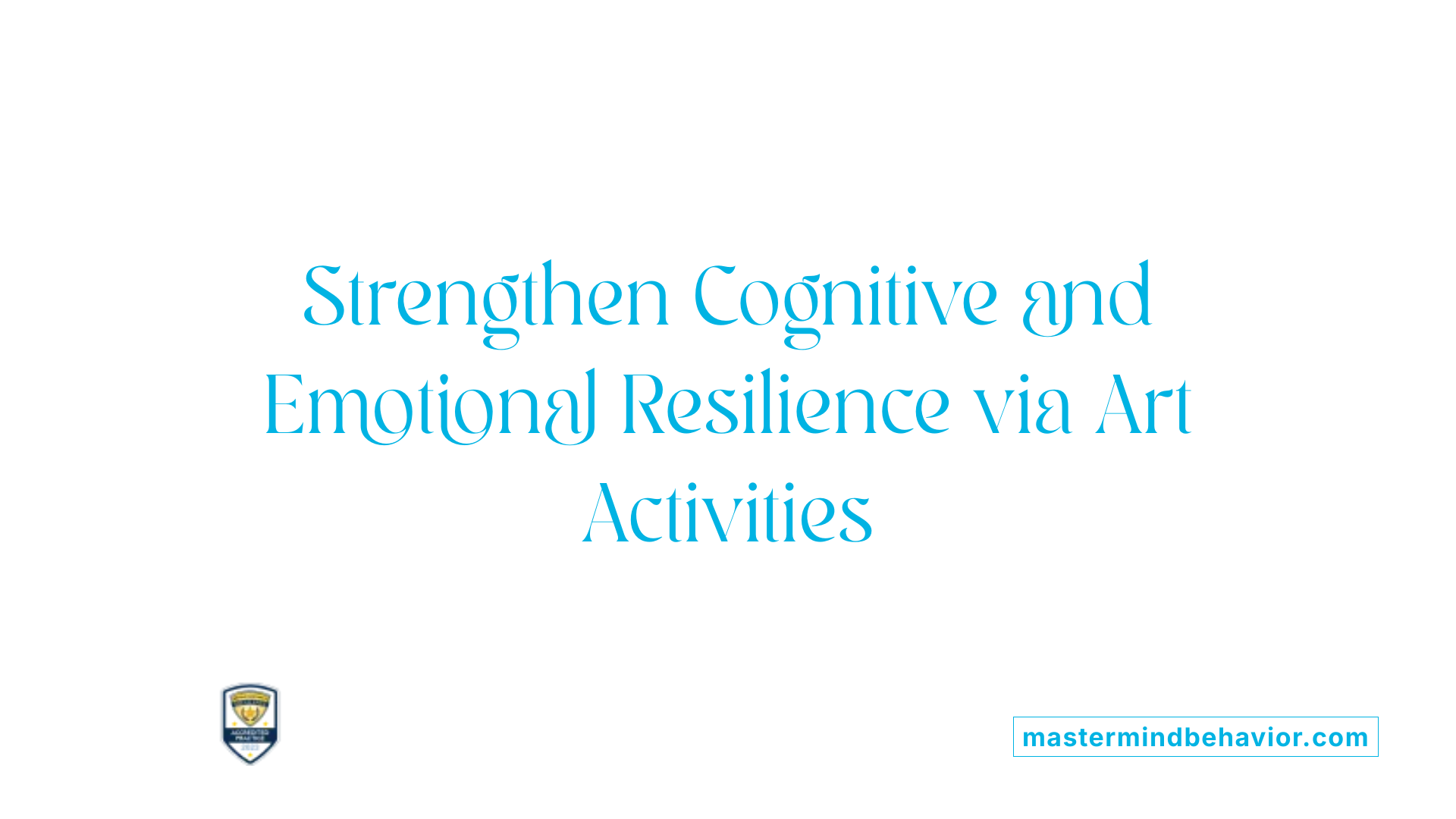
What techniques are used to develop cognitive and social skills through art therapy?
Art therapy for children with autism employs a variety of engaging techniques designed to foster cognitive development, problem-solving abilities, and social skills. Structured activities like focused pattern-making, mural creation, and emotion cards provide concrete tasks that encourage planning, sequencing, and organizational thinking. These projects not only stimulate creativity but also enhance problem-solving by challenging children to develop original ideas and solutions.
Creating art also naturally improves fine motor skills and hand-eye coordination, which are vital for daily activities such as writing, dressing, and self-care routines. The act of drawing, sculpting, or painting helps children refine their motor control in a sensory-rich environment.
Group and collaborative activities are particularly effective in developing social skills. When children work together on projects—like murals or shared sculptures—they practice turn-taking, listening, sharing materials, and cooperating. These interactions promote social engagement and interpersonal understanding.
Most importantly, engaging in creative arts nurtures resilience and self-confidence. Children experience a sense of achievement when completing an artwork, which builds positive self-perceptions and encourages participation. Over time, this process helps children build the resilience necessary to face social and emotional challenges, reinforcing their ability to handle setbacks and keep trying.
In summary, art therapy utilizes diverse techniques—structured projects, collaborative tasks, sensory activities—that stimulate cognitive growth, improve motor skills, and foster a resilient, confident attitude in children with autism.
Integrating Art Therapy with Other Interventions
How does art therapy complement ABA therapy in autism intervention?
Art therapy and ABA therapy serve different but mutually reinforcing roles in supporting children with autism. ABA (Applied Behavior Analysis) therapy offers a structured approach that focuses on reinforcing desirable behaviors and reducing maladaptive ones through measurable, goal-oriented strategies.
In contrast, art therapy provides a creative, nonverbal outlet for emotional expression and sensory engagement. When combined, these approaches create a more holistic treatment plan. Art therapy enhances motivation and engagement by making learning enjoyable, especially when verbal skills or behavioral responses are limited.
The creative activities used in art therapy often act as natural rewards, encouraging children to participate and stay motivated. This makes it easier to teach social skills, improve emotional regulation, and address behavioral challenges.
Integrating art therapy with ABA also helps children develop better social interactions. Art activities promote turn-taking, sharing, and cooperative behavior, which are key components of social learning.
Moreover, this combined approach can reduce anxiety and improve emotional understanding, contributing to more meaningful and sustained progress.
Overall, pairing art therapy with ABA creates a versatile strategy that leverages the strengths of both methods. It offers children with autism a chance to learn and grow through a variety of expressive and structured experiences.
| Aspect | Role | Benefits | Additional Details |
|---|---|---|---|
| Complementary use | Combining structured and creative activities | Enhances motivation, engagement | Art therapy supports ABA goals by making activities emotionally rewarding |
| Social skills | Using art for social interaction | Promotes cooperation, sharing | Group art projects teach social cues and turn-taking |
| Behavior reduction | Art as reward and calming tool | Reduces challenging behaviors | Sensory art activities help regulate emotions |
| Emotional connection | Nonverbal emotional expression | Builds emotional awareness | Art offers a means for expressing feelings beyond words |
Research supports that this pairing not only improves expressive and social skills but also enhances overall well-being. When blended effectively, art therapy and ABA form a comprehensive approach that addresses the diverse needs of children on the autism spectrum.
Conclusion: Embracing Creative Approaches for Autism Support
Supporting children with autism spectrum disorder (ASD) through creative arts interventions offers a promising pathway to enhance their social, emotional, and cognitive skills. These therapies, including drawing, painting, music, and theatre, provide a rich sensory experience that can address sensory processing challenges and promote emotional regulation. Importantly, engaging in multiple sessions of art therapy has been shown to lead to significant improvements, especially when activities are tailored to individual needs.
Art therapy fosters nonverbal communication, helping children express feelings that may be difficult to articulate verbally. Through collaborative projects and sensory-rich activities, children learn social skills like turn-taking, listening, and cooperation, which are crucial for social integration. Additionally, visual art and tactile activities help develop fine motor skills and promote self-esteem, confidence, and emotional resilience.
Research supports that both group and individual formats of therapy are effective. Group sessions encourage social interaction, while one-on-one approaches allow for personalized emotional support. Combining art therapy with behavioral approaches such as ABA enhances overall progress, making therapy more well-rounded and impactful.
A significant aspect of these interventions is their alignment with neurodivergent-affirming care. This approach recognizes and respects differences in communication, sensory experiences, and social behaviors, emphasizing strengths and promoting acceptance. Access to trained providers familiar with these perspectives is essential, especially given existing challenges in securing mental health resources.
Parents and communities play vital roles in supporting therapy outcomes. Parental involvement in art-based activities can deepen understanding, foster nonverbal communication, and strengthen familial bonds. Community engagement helps normalize creative therapies as valuable tools for empowering children with ASD.
In summary, evidence-based creative arts interventions, rooted in neurodivergent-affirming principles, provide meaningful support for children with autism. By embracing these approaches and encouraging active participation from families and communities, we can foster more inclusive environments that nurture development, self-expression, and emotional well-being.
The Power of Creative Expression in Autism Support
Art therapy represents a vital, evidence-based tool that uniquely supports emotional understanding and social development in individuals with autism. By offering a safe, multisensory, and non-verbal space for expression, art therapy helps bridge communication gaps, reducing anxiety and fostering self-esteem. Its techniques promote emotional literacy, insight, and resilience—core components for improving quality of life and social integration. Embracing creative, neurodivergent-affirming practices and integrating them with other interventions such as ABA can amplify positive outcomes. Community and parental engagement play pivotal roles in nurturing these skills, ultimately contributing to a more inclusive and supportive environment for autistic individuals to thrive through the transformative power of art.
References
- Art Interventions for Children With Autism Spectrum Disorder
- "How Can Art Therapy Be Utilized to Support Emotional ...
- Art Therapy as Social skills and Emotional Regulation Intervention ...
- Benefits of Art Therapy for Autistic Individuals
- 5 Best Exercises in Art Therapy for Autism Support - Scholistico
- Clinicians' Perceptions of Parent-Child Arts Therapy with Children ...
- Benefits of Art Therapy for Autism: 6 Easy Activities to Try At Home


